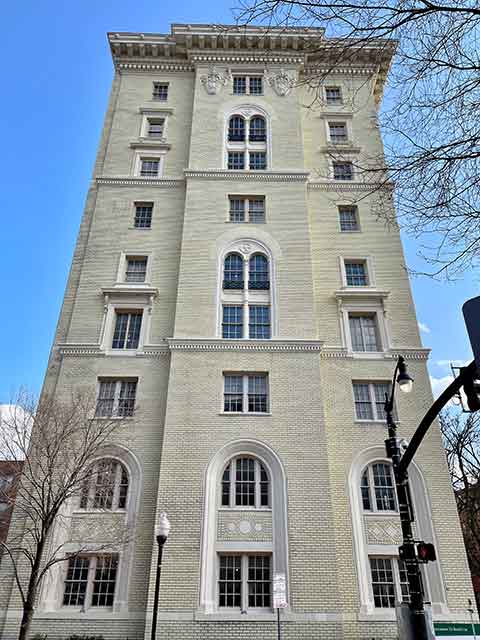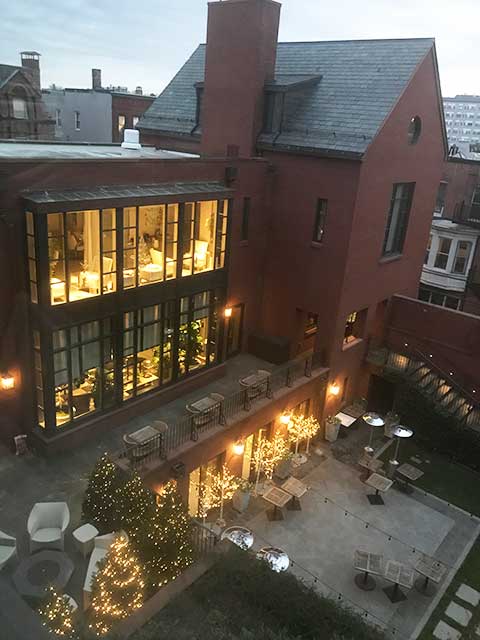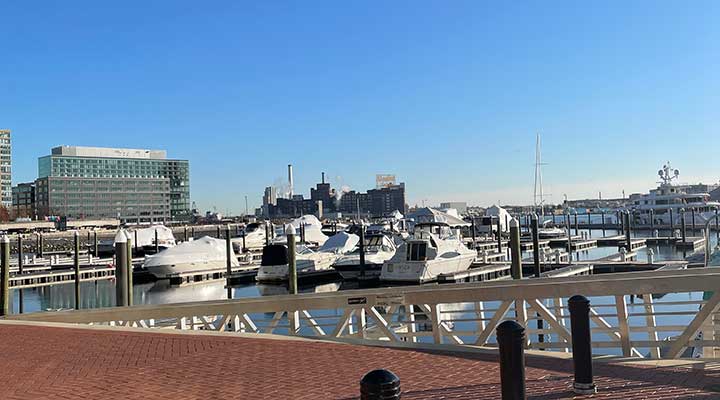
Moving to Baltimore: What You Need to Know
Mar 31, 2023 / Laura Bolt
Thinking of moving to Baltimore? As Maryland’s main social and economic hub, Baltimore attracts a wide range of people, from young professionals looking to kick start their careers, to growing families who want to experience the family fun of life in the city. Sometimes known as Charm City, there’s a lot to love about Maryland’s largest city.
Baltimore is a special draw for history buffs—founded in 1729, there are over 65,000 homes on the city’s historic registrar. In fact, this is the city where Francis Scott Key wrote “The Star Spangled Banner”;!
“I like the fact that it gives you a good balance,”; says Public Storage Baltimore District Manager Nikia Crumel.
“There are parts of Baltimore that remind you of being in a city environment, but you can go a few blocks further and feel like you’re in the suburbs,”; says Crumel, a native New Yorker who moved to the Baltimore area five years ago. “It’s a great combination of a quiet, community feel that’s just a few blocks away from shopping, bars, and restaurants. It’s a really convenient mix.”;
From Harbor views and fresh-caught crabs to world class museums and performing arts, there’s something for just about everyone. If you’re thinking of making the move to Baltimore, read on for everything you need to know about making it in this east coast city.
Who lives in Baltimore?

With a median age of 35, Baltimore tends to appeal to a slightly younger demographic. With access to other popular cities across the eastern seaboard (Philadelphia is just under two hour away, while Washington, DC clocks in at just about an hour’s drive), Baltimore is a convenient destination for commuters and anyone who wants a city vibe with a community feel.
Baltimore also attracts students with a multitude of colleges and universities, so you can expect a lively cohort of both undergraduate and graduate students keeping the city buzzing.
While there is plenty to do in the center of the city, families and those looking for a bit more space can find it just outside the city in well-established suburbs. If you’re moving to Baltimore from out of state, check out our blog for some helpful tips to keep in mind.
What should I know about Baltimore?
Traffic
Whether you’re commuting or just looking to get around town, expect to spend a decent amount of time in the car. Baltimore commuter on average about 30 minutes in traffic during rush hour, especially on the busy outer Loop of the Beltway. However, as with many major cities, Baltimore has a
solid public transportation system with buses, light rail, and the MARC train. And if you’re feeling like some exercise, there’s always the option to walk!
Jobs
Port of Baltimore annually generates $3 billion in wages, making it one of the major employers in the area. As of July 2021, the unemployment rate in Baltimore County was 5.5%, slightly higher than the national average. However, with robust tourism, plentiful colleges and universities, and a burgeoning tech sector (as well as proximity to Washington, DC), Baltimore attracts job seekers from across the country.
Schools
With a mix of public, private, and charter schools (as well as many colleges and universities), Baltimore isn’t short of educational options. However, Baltimore city schools have struggled in the past with low rankings and test scores. Those looking for the best opportunities for younger students may want to consider areas outside the city center.
With 17 colleges and universities nearby including Johns Hopkins University, Loyola University of Maryland, and Morgan State University, Baltimore is a popular destination for higher education.
How expensive is Baltimore?

With its popular attractions and plentiful amenities, Baltimore can be a relatively expensive city to call home. Nerdwallet found that it is the 39th most expensive city in their US database, and with a 17% higher than average cost of living cost. That said, for those who want a city atmosphere, it’s still cheaper than other east coast cities like New York or Boston.
According to Realtor.com, the average cost of a home in Baltimore is $225,000. While buying a home is still popular, stats show that 52% of those living in Baltimore are now choosing to rent. The average rent in Baltimore is $1,483, though that number can vary by neighborhoods (In Butcher Hill, for example, that number climbs to $2,432).
Where should I live in Baltimore?
From luxury high-rises to Victorian row homes to charming garden apartments, Baltimore caters to everyone’s tastes. Amy Bloomer, founder of Baltimore area organizational service Let Your Space Bloom, moved to Baltimore seven years ago and loves the community feel.
When it comes to finding your perfect spot in the city, Bloomer says that “as in most urban places, if you’re within the Baltimore city limits, space is at a real premium. Once you get into the suburbs, you do have more options to get extra space. When you choose a place to live, you’ll want to consider where you’re coming from: are you upsizing or downsizing?”;
Before you break out the boxes and duct tape, check out some expert advice on how to declutter before you start packing up your place. We’ve also gathered some of the best advice from moving experts to help make your transition smooth.
If you’re not familiar with the area, Bloomer recommends storing your larger items and renting a place first to get a feel for the neighborhood. Some of the most popular options are:
Federal Hill
Filled with popular bars, restaurants, and shopping, this historic neighborhood offers plenty to do for students, young professionals, and anyone looking to experience the best of the city. Row homes and panoramic views abound.
Canton
If high end townhomes and condos are more your style, you might want to consider Canton. Close to the Inner Harbor, this area has experienced a major boom in growth over the past few years and now offers a plethora of desirable dining, festivals, and housing options.
Hampden
With art studios, creative live/work spaces, and a funky vibe, Hampden has become a quirky destination for artists and other creatives. Row Houses and townhomes are popular housing options in this neighborhood.
Charles Village
Charles Village’s proximity to Johns Hopkins University makes it a popular option for students, but it’s one of the city’s most diverse areas. Housing options are eclectic, with row houses, condos, and warehouses all on the market.
Mt. Washington
For a little more peace and quiet without sacrificing the fun, Mt. Washington offers a smaller community feel within the city. Housing ranges from large Victorian houses to quaint and cozy apartments.
What is there to do in Baltimore?

With shopping, dining, museums, and plenty of green space, it’s hard to be bored in Charm City. In terms of staying busy in Baltimore, Crumel says to “be prepared to experience a lot! It’s close to Washington, DC and Virginia, so you have the option to do a lot of touristy things. People with kids can also find a lot of free events and activities. It’s a city with lots of cultural opportunities, but it also gives you the chance to slow down.”;
Get your culture fix at The Walters Art Museum, The Baltimore Museum of Art, and the American Visionary Art Museum.
For a day of family fun, check out the Port Discovery Children’s Museum, the National Aquarium, or the Maryland Zoo.
Of course, the famed Inner Harbor has something for everyone. While it’s a popular destination for tourists, the mix of eateries, water views, live music, and bars never fails to charm locals as well.
If you’ve overindulged on Old Bay steamed crabs (a Baltimore Speciality) work them off at Druid Hill Park, Federal Park, or Patterson Park.
As far as sports goes, you’ve got your pick of teams to root for. The Baltimore Ravens give NFL fans a reason to cheer, while seeing the Orioles at classic Camden Yards is a dream for every baseball fan.






